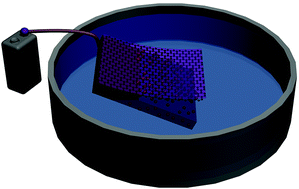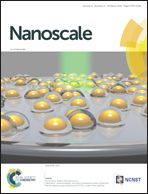Graphene delamination using ‘electrochemical methods’: an ion intercalation effect
Abstract
The mechanism of graphene delamination from a Pt catalyst growth surface with electrochemical methods is studied. After a water intercalation step, an electrochemical graphene delamination process is done with a variety of different electrolytes. It is shown that (hydrogen or oxygen) bubble formation is not the main driving force to decouple graphene from its catalyst growth substrate. Ion intercalation is identified as the primary component for a fast graphene delamination process from its catalytic growth substrate. When the Pt/graphene sample is negatively charged, cations will intercalate, assuming they do not reduce within the electrochemical window of the solvent. This cation intercalation does result in graphene delamination. In the same way, anions intercalate in positively charged Pt/graphene samples when they do not react within the electrochemical window of the solvent. Furthermore, it is shown that applying a potential is sufficient (current is not needed) to induce ion intercalation and, as a result, graphene delamination. These findings open the door to avoid Na+ or K+ contamination introduced during currently described electrochemical graphene delamination. Alternative electrolytes (i.e. ammonium hydroxide and tetraethylammonium hydroxide) are proposed, due to the absence of alkali contaminants and rapid cation intercalation to delaminate graphene.



 Please wait while we load your content...
Please wait while we load your content...